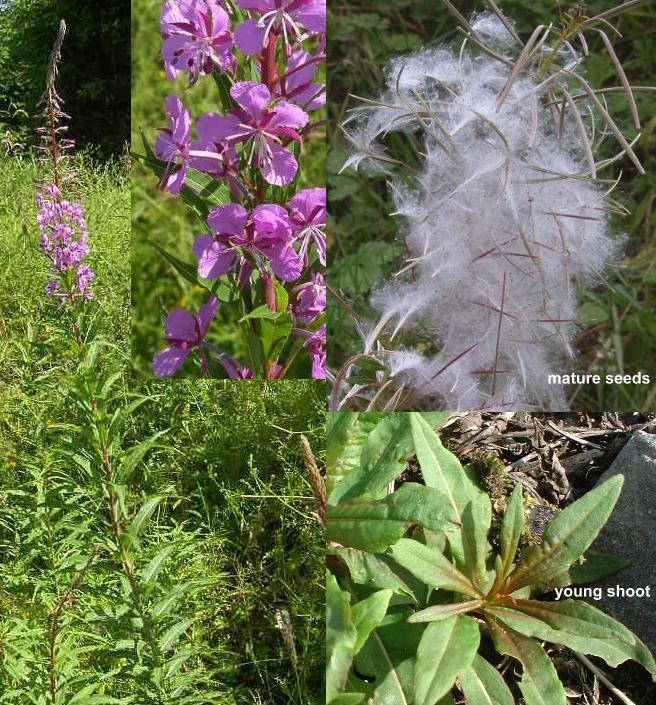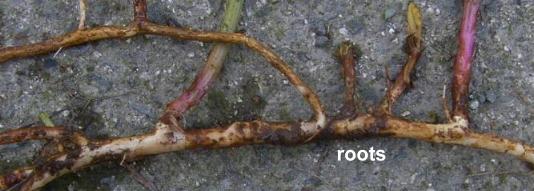Rosebay WillowherbScientific Names: Epilobium angustifolium syn. Chamerion angustifolium, Chamaenerion angustifolium, |
Perennial, spreading by seed and creeping, fleshy white rhizomes. When it is in flower in large clumps it makes a striking feature - this gives rise to name Fireweed when a large stand is viewed from afar. The fluffy seedheads that follow make another show and the slightest breeze sends forth a cloud of them.
Rosebay Willowherb is the main food-plant of the Elephant Hawk-moth caterpillar.
Introduced from North America in the 18th and 19th centuries as a garden plant, its invasive behaviour has allowed it to become naturalised. There are still some gardeners who grow it as an ornamental plant, particularly the white variant.
The young leaves have been used by indigenous North American tribes, fresh in a salad or as a cooked vegetable. Young shoots can be prepared like asparagus and the pith of the stems is used to thicken soups and stews. The upper leaves are used as a substitute for tea in parts of Europe and Russia, and is said to be anti-inflammatory. The pollen is claimed to produce good quality honey.
A poultice will draw out infections. Recent studies have shown it to be anti-inflammatory with uses for nappy rash, sunburn and as a mouthwash. The young leaves are said to be a mild sedative.
The pointed, lanceolate, hairless leaves are arranged alternately on the smooth stem; they turn red and yellow in autumn before the whole topgrowth dies back.
From June to August violet or rose-purple flowers open gradually from the base of the racemes and the four petals are slightly notched. The long slender friut capsule matures to split lengthwise with four reflexed valves containing small seeds covered with white silky hairs that are carried away on the slightest breeze
Height - up to 120 cm.
Fork out the roots, but they are quite brittle. Does not survive repeated
cutting or pulling. Do not allow seed-head to mature.
Weedkillers to use:-
Paraquat, Diquat kill the topgrowth on contact, but repeated application is required.
Glyphosate, with systemic action is taken down into
underground parts so is a better herbicide to use, especially in autumn as the plants are taking starches and nutrients down to the roots for over-wintering.
See also Purple Loosestrife and Great Willowherb.
Follow these links for further details on Weeds, Weed Removal and Weed Prevention.

